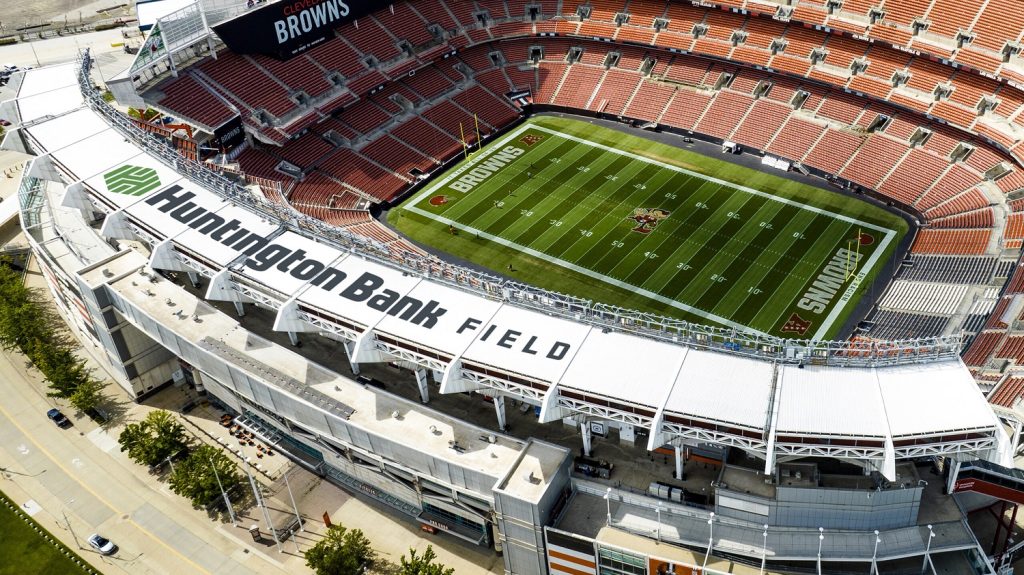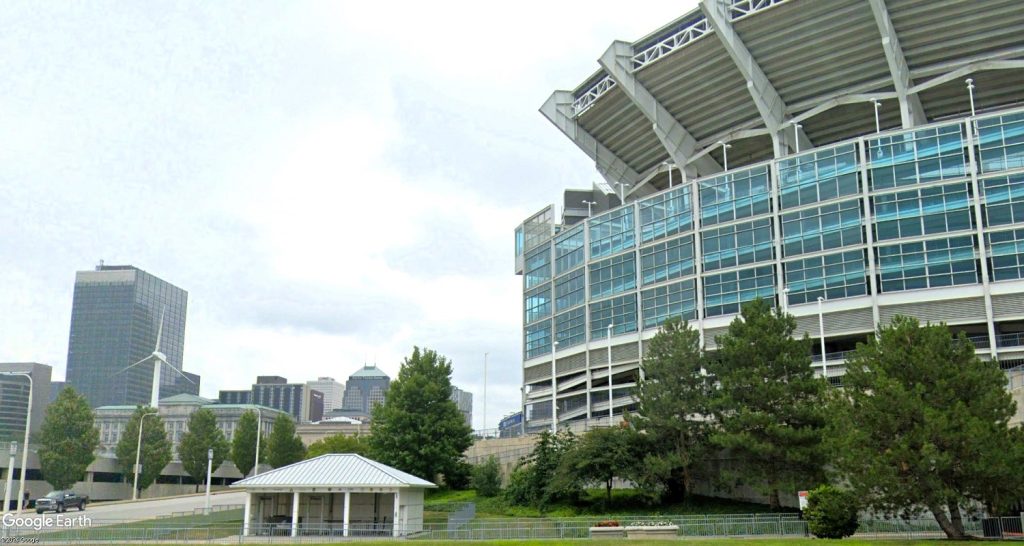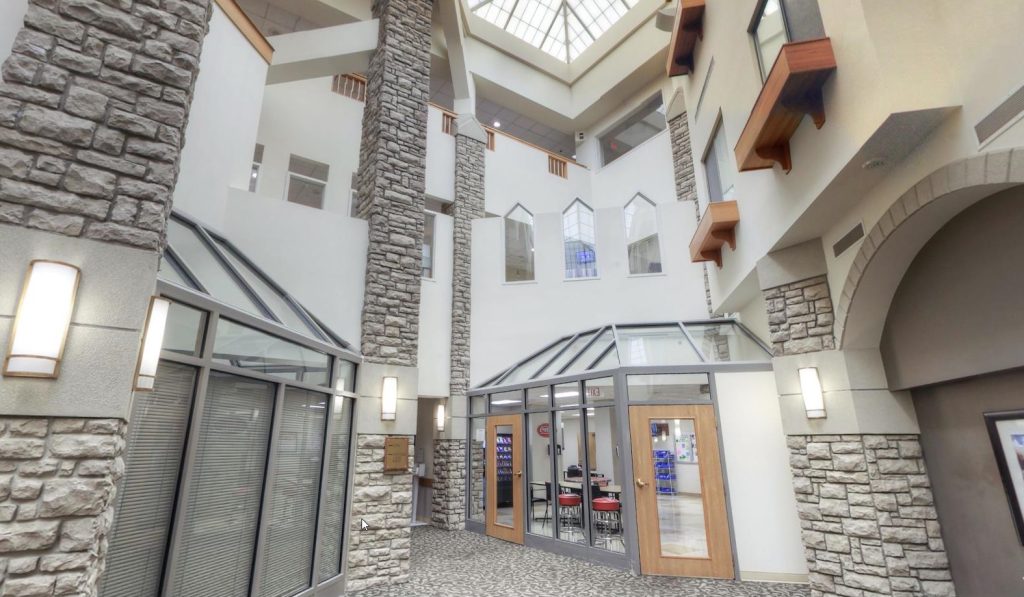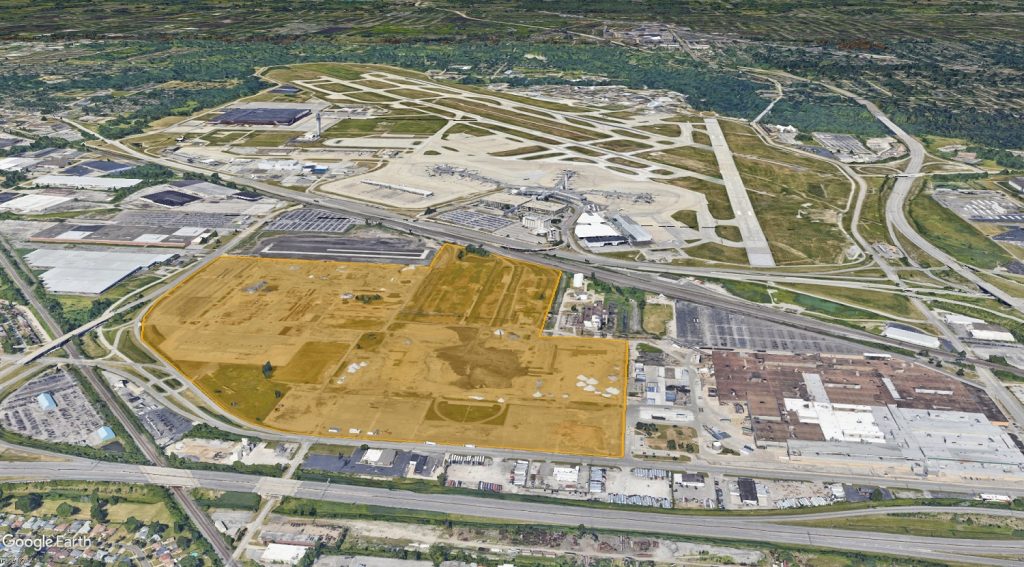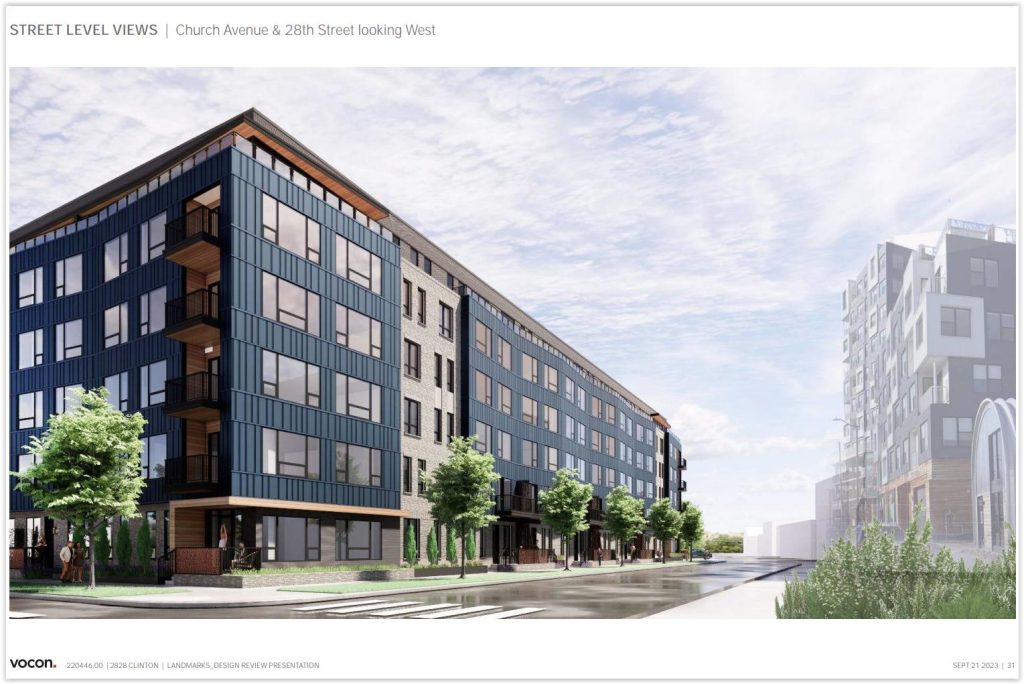Ronayne says he’s not yet ready to concede

An obviously exasperated Cleveland Mayor Justin Bibb today claimed the owners of the Cleveland Browns football “abandoned” downtown for suburban Brook Park, in a move due to be announced by the team as early as tomorrow. But Cuyahoga County Executive Chris Ronayne said he wasn’t ready to concede defeat yet.
The Browns’ ownership, the Haslam Sports Group (HSG) led by husband and wife Jimmy and Dee Haslam, considered a 50/50 public/private funding deal involving Cleveland, Cuyahoga County plus state funds to renovate the 1999-built, open-air Huntington Bank Field for about $1.2 billion. But, barring a miracle, the Browns will instead leave downtown after the 2028 football season for a $2.4 billion roofed stadium and up to $1.2 billion in supportive development.
In his press conference, Bibb ticked off a list of recent developments downtown, capped off by yesterday’s award of $60 million in federal dollars to start the lakefront development process. Ironically, it was a process started by the Haslams to support a pedestrian land bridge to the stadium over the lakefront railroad tracks and Shoreway, the latter which has to be redesigned to accommodate it.
“The Haslams’ choice to move their team away from this progress is frustrating and profoundly disheartening,” said Bibb in a press conference at City Hall. “For the past two years, this administration made relentless efforts to craft solutions that advance both HSG’s objectives and the long-term interest of our residents and the broader community. We put forth a fiscally responsible yet aggressive financial package larger than any other financial package offered for a sports facility in Cleveland to renovate the existing stadium.”
But Bibb said the Haslams shifted course and “abandoned” the renovation plans. He said they pivoted to the idea of a new stadium in Brook Park, about which NEOtrans broke the story in February. We also broke the story in August that Cleveland offered to close and repurpose Burke Lakefront Airport to offer an even larger development site than the 176 acres the Browns are buying in Brook Park.
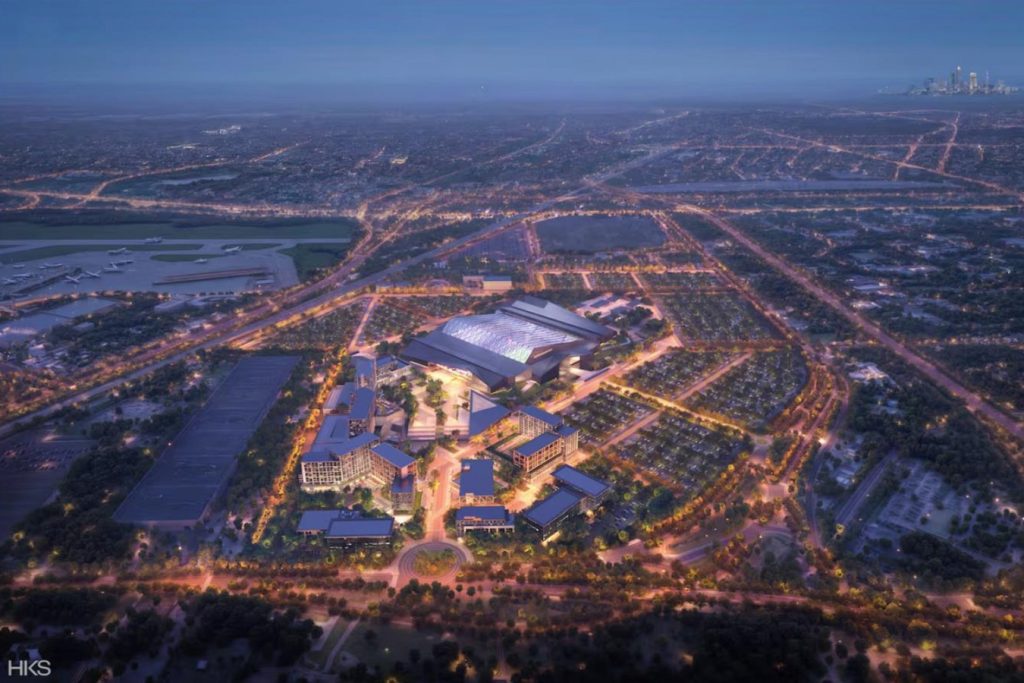
The Haslam Sports Group’s proposed stadium site in Brook Park could also feature significant new development including hotels, apartment, restaurants, shops and entertainment. This view looks north from Snow Road with Hopkins International Airport on the left and Downtown Cleveland in the distance at right (HKS).
Finally, last week, NEOtrans reported that the clock had run out on Cleveland. Burke couldn’t be repurposed fast enough to suit the Haslams’ timeline. We noted that the Haslams were expected to announce sometime this month their decision to build a Brook Park domed stadium.
“We have communicated to the mayor and his team at every step of the process regarding our mutual efforts to keep the stadium downtown and we conveyed to them yesterday, our most impactful investment for our region is to focus on making a dome stadium and adjacent development in Brook Park a reality,” said Jimmy and Dee Haslam in a written statement.
“With the funding mechanisms we continue to work on, this stadium will not use existing taxpayer-funded streams that would divert resources from other more pressing needs,” the Haslams continued. “Instead, the over $2 billion private investment, together with the public investment, will create a major economic development project that will drive the activity necessary to pay the public bond debt service through future project-generated and Browns-generated revenue.”
“I don’t think this is over yet,” Ronayne said in a phone interview with NEOtrans. “I don’t think the city is out of it.”
“This is about downtown,” he continued. “A strong downtown is what makes a region stronger. It’s our shared space. With the post-COVID office market complicated, the backstop for downtown is housing. What makes it interesting is we’re a mid-sized city with big-city assets. Having three major sports teams within walking distance of downtown housing is part of that. Cleveland has that competitive advantage. Why walk away from it?”
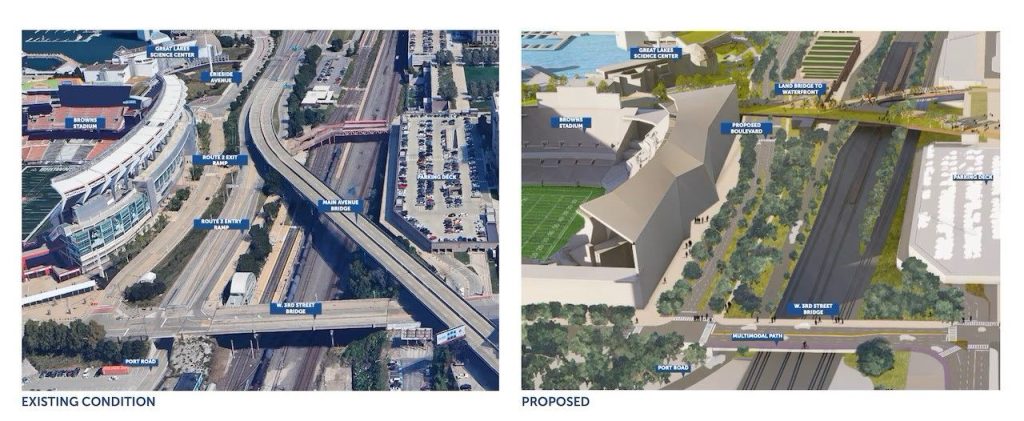
As a result of yesterday’s award of $60 million in federal transportation funds to the city of Cleveland, the Shoreway through downtown will be reconfigured as a boulevard. These before-and-after views include the football stadium. But Mayor Justin Bibb said his administration is already considering how to use the stadium land differently (FO).
County officials hold the key to the countywide sin tax — an important piece of funding for the existing football stadium and one that was part of Cleveland’s $461 million financial package to renovate it. While Brook Park is in Cuyahoga County, Ronayne couldn’t say whether the sin tax, at $4 million per year or $120 million or 30 years, would or would not be part of a Browns’ stadium financial package there.
“I want to speak with (county) council colleagues,” Ronayne said about the sin tax. “I’m not ready to concede yet that we cannot have football in Downtown Cleveland. I think there’s a play to the existing facility, which is younger than Progressive Field (Cleveland Guardians) and Rocket Mortgage FieldHouse (Cleveland Cavaliers/Monsters). We should be renovating within our means while we plan ahead with Burke. But I’m not at all against Brook Park.”
Both Bibb and Ronayne said the Browns’ move out of downtown will damage the city and harm small business, hotels, restaurants and bars. They noted that the new Brook Park stadium and proposed entertainment facilities, hotels and restaurants will end up competing with downtown’s public assets, some of which were subsidized by taxpayers.
“Cleveland and Northeast Ohio are the fabric of the Browns and that will always be the case,” the Haslams added. “Our community commitment to Cleveland and efforts to improve the lives of its residents will not change. Again, our work with Mayor Bibb and city officials has been transparent and collaborative throughout. We will continue to work in earnest with city, county, and state officials to work together on these transformational opportunities.”
Cleveland City Council in May approved an ordinance directing the city to enforce the “Art Modell Law” if the Haslams decide to move to Brook Park. But the proposed site is roughly one football field’s length from the Cleveland city limits. The Modell Law was passed by the state in 1996 after then-Browns owner Art Modell announced he was moving his football team to Baltimore. The Browns name, colors and history remained in Cleveland to adorn a new team added in 1999.
The Modell Law states that, if a professional sports team that uses a tax-supported facility stops playing most of its home games at that facility and instead plays them elsewhere, the owner of that team must enter into an agreement with the original host community to permit the team to play most of its home games elsewhere. The original host community or a resident of that community would have at least six months notice to buy the team.
“That would be a question for City Council to take on,” Bibb said of the application of the Modell Law.
“We passed our ordinance and we expect the administration to uphold the law,” City Council President Blaine Griffin responded. “And we doubled down on it (the ordinance) with a resolution about the (pending) move. We hope the administration and the state enforce the Modell Law.”
But Bibb said he has already directed his administration to start preliminary design of potential new lakefront land uses in lieu of the stadium and will accelerate more investment into the lakefront masterplan. Much of that can come from the city’s large, new tax increment financing (TIF) program called the Shore-To-Core-To-Shore district that’s expected to generate at least $2.9 billion for public works projects over 30 years in and near downtown.
“The Haslams may want a roof over their heads but my response is to make sure our residents have a roof over theirs. Our residents are our first priority and we must never compromise them. I have exhausted every option that does not compromise our values.” But Bibb concluded, “Our door is not closed. If Brook Park proves not viable, we will return to the table.”
END

